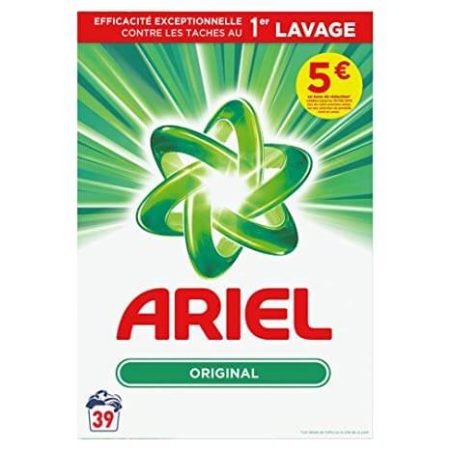Gynecological tools are a crucial part of the medical field, used to diagnose and treat various conditions that affect the female reproductive system.
- 1 . Cannula tool use in gynecology.
- 2 . Curettes tools use in gynecology
- 3 . Dilators & Sounds tools use in gynecology
- 4 . Disposable OB/GYN tools use in gynecology
- 5. Forceps use in gynecology
- 6. Hooks use in gynecology
- 7. HSG Catheters & Trays use in gynecology
- 8. Intestinal Instruments use in gynecology
- 9. IUD Insertion & Removal Kits use in gynecology
- 10. IUI Catheters use in gynecology
- 11. LLETZ/LEEP tools use in gynecology
- 12. Needle Holders use in gynecology
- 13. Pessaries use in gynecology
- 14. Retractors use in gynecology
- 15. Scissors use in gynecology
- 16. Speculum use in gynecology
- 17. Suction Tubes use in gynecology
- 18. Uterine Manipulators use in gynecology
- 19. Scalpel Handles use in gynecology
These tools include a variety of instruments and equipment that are designed to help physicians and healthcare professionals evaluate and treat women’s health issues.
Some of the most commonly used gynecological tools include speculums, forceps, curettes, and ultrasound machines.
In this article, we will provide an overview of the different types of gynecological tools which include:
- Cannulae
- Curettes
- Dilators & Sounds
- Disposable OB/GYN
- Forceps
- Hooks
- HSG Catheters & Trays
- Intestinal Instruments
- IUD Insertion & Removal Kits
- IUI Catheters
- LLETZ/LEEP
- Needle Holders
- Pessaries
- Retractors
- Scissors
- Speculum
- Suction Tubes
- Uterine Manipulators
- Scalpel Handles
1 . Cannula tool use in gynecology.
A cannula is a thin, hollow tube that can be inserted into the body for a variety of medical procedures, including those in gynecology.
It can be used for diagnostic purposes, such as taking a sample of fluid for analysis, or for therapeutic purposes, such as delivering medication or performing a procedure.
In gynecology, cannulas may be used for procedures such as endometrial biopsy, hysteroscopy, and laparoscopy.
Example of the types of cannulas use in gynecology are:
Endometrial biopsy cannula
Hysteroscopy cannula
Laparoscopy cannula
Follicular aspiration cannula
Embryo transfer cannula
Endometrial sampling cannula
Cervical dilatation cannula
Tubal cannulation cannula
Uterine sounding cannula
Cannula for intrauterine insemination.
2 . Curettes tools use in gynecology
A curette is a medical instrument that is used to scrape or scrape away tissue. In gynecology, curettes are used to remove tissue from the uterus or cervix.
They can be used to diagnose and treat various gynecological conditions, such as abnormal bleeding, polyps, and precancerous or cancerous growths. Some specific examples of the types of curettes used in gynecology are:
Cusco’s
Sims
Wertheim
Harris
Hegar
Albarran
Rasp
Spoon
Ring
Laminaria
Dilator
Biopsy
3 . Dilators & Sounds tools use in gynecology
Dilators and sounds are medical instruments used in gynecology for various procedures.
They are used to dilate or stretch the cervix, as well as to diagnose and treat conditions such as cervical stenosis, vaginismus, and pelvic pain.
Hegar Dilators
Pratt Dilators
Van Buren Sounds
Sims’ Speculum
Cusco’s Speculum
Pederson Speculum
Rose Bengal Sound
Hanks Dilator
Kistner Dilator
Heaney Clamp
4 . Disposable OB/GYN tools use in gynecology
There are several disposable tools commonly used in gynecology, they include:
Cervical cap
Ovulation prediction kit
Pregnancy test
Disposable brush
Sterilized drapes
Disposable speculum
Disposable curette
Disposable biopsy forceps
Disposable endocervical brush
Disposable endometrial suction curette
Disposable cervical dilator set
Disposable hysteroscope sheath
Disposable hysteroscopic scissors
Disposable hysteroscopic grasper
Disposable hysteroscopic morcellator
Read also : Short Answer Questions On Obstetrics And Gynaecology – Objective Type
5. Forceps use in gynecology
Forceps are medical instruments used in gynecology for various procedures.
They are often used to grasp or hold tissue during exams, procedures or childbirth.
They include:
Allis Forceps
Kielland Forceps
Simpson Forceps
Wrigley Forceps
O’Neil Forceps
Cusco’s Forceps
Sponge Forceps
Biopsy Forceps
Clamp Forceps
Cervical Forceps
6. Hooks use in gynecology
Hooks are medical instruments used in gynecology for various procedures.
They are often used to grasp or hold tissue during exams, procedures or surgeries. Some common examples of hooks used in gynecology include:
Cusco’s Hook
Sims’ Hook
Pederson Hook
Kerrison Punch Hook
Uterine Manipulator Hook
Tenaculum Hook
Biopsy Hook
Cervical Hook
Polypus Hook
Fallopian Tube Hook
7. HSG Catheters & Trays use in gynecology
HSG (Hysterosalpingography) is a radiologic test used to evaluate the uterus and fallopian tubes.
Here are 10 examples of catheters and trays used in gynecology for this procedure:
Radiopaque HSG Catheter
Hydrotubation HSG Catheter
Teflon HSG Catheter
Flexible HSG Catheter
Single-use HSG Catheter
Reusable HSG Catheter
HSG Injection Tray
HSG Catheterization Tray
HSG Sterile Tray
HSG Procedure Tray
8. Intestinal Instruments use in gynecology
Intestinal instruments are not typically used in gynecology.
Gynecological instruments are specifically designed for use in the female reproductive system and include tools such as speculums, curettes, and biopsy forceps. They are :
Vaginal Speculum
Cervical Dilators
Uterine Sound
Uterine Biopsy Forceps
Cervical Scissors
Ovum Forceps
Endometrial Sampling Curette
Hysteroscope
Hysterotomy Scissors
Uterine Manipulator
9. IUD Insertion & Removal Kits use in gynecology
Intrauterine devices (IUDs) are a form of birth control that are inserted into the uterus to prevent pregnancy.
IUD insertion and removal kits are specialized tools that are used by healthcare providers to insert and remove IUDs.
The kits typically include a uterine sound to measure the depth of the uterus, a guide wire to aid in the insertion of the IUD, and forceps to grasp and manipulate the IUD. Example of IUD insertion and removal kits use in gynecology include:
Inco-Flex IUD Insertion and Removal Kit
Nova-T IUD Insertion and Removal Kit
LNG-IUS IUD Insertion and Removal Kit
Mirena IUD Insertion and Removal Kit
Skyla IUD Insertion and Removal Kit
Paragard IUD Insertion and Removal Kit
Copper T IUD Insertion and Removal Kit
Pro-Flex IUD Insertion and Removal Kit
Flexi-T IUD Insertion and Removal Kit
Kyleena IUD Insertion and Removal Kit
10. IUI Catheters use in gynecology
IUI (intrauterine insemination) catheters are specialized instruments used in gynecology to assist with the process of artificial insemination.
These catheters are thin, flexible tubes that are inserted through the cervix and into the uterus, where they are used to deposit sperm directly into the uterus.
The IUI catheter is designed to be soft, flexible and atraumatic to the cervix and uterus. Examples include:
CooperSurgical EASYCATH IUI Catheter
Ferti-Pro IUI Catheter
MedGyn IUI Catheter
Minco IUI Catheter
Spermcheck IUI Catheter
Origio IUI Catheter
Ferti-Lene IUI Catheter
CooperSurgical IUI Catheter
Fertec IUI Catheter
11. LLETZ/LEEP tools use in gynecology
LLETZ (large loop excision of the transformation zone) and LEEP (loop electrosurgical excision procedure) are methods used in gynecology to remove abnormal or precancerous cells from the cervix.
Both procedures use specialized tools to remove abnormal tissue, typically under local anesthesia.
The LLETZ procedure involves the use of a thin wire loop that is heated by electricity to remove abnormal tissue from the cervix. The LEEP procedure, on the other hand, uses a wire loop that is heated by high-frequency electrical current to excise abnormal cervical tissue.
The instruments used in LLETZ/LEEP procedures typically include:
Thin wire loop
How Can I Test Myself for Scabies
Electrosurgical generator
Suction and irrigation device
Biopsy forceps
Scissors
Cervical dilator
12. Needle Holders use in gynecology
Needle holders, also known as needle drivers, are specialized instruments used in gynecology to hold and manipulate needles during surgical procedures.
These tools are typically used in conjunction with suture materials to close incisions or wounds.
Some examples of needle holders that are commonly used in gynecology include:
Adson-Brown Needle Holder
Mayo-Hegar Needle Holder
Rochester-Pean Needle Holder
Crile-Wood Needle Holder
Kelly Needle Holder
Backhaus Needle Holder
Castroviejo Needle Holder
Potts-Smith Needle Holder
Tissue Forceps Needle Holder
Micro Needle H
13. Pessaries use in gynecology
Pessaries are devices that are used to support the pelvic organs in cases of pelvic organ prolapse.
Pessaries are inserted into the vagina and are held in place by the vaginal walls.
They help to relieve symptoms of pelvic organ prolapse such as pressure, discomfort, and incontinence.
There are several types of pessaries available, with different shapes, sizes and designs. Some examples of pessaries that are commonly used in gynecology include:
Ring pessary
Cube pessary
Gellhorn pessary
Donut pessary
Cylinder pessary
Rectal pessary
Shelf pessary
Single-rod pessary
Diaphragm pessary
Bio-adhesive pessary
14. Retractors use in gynecology
Retractors are instruments that are used to spread tissue and to hold it in place during surgical procedures, providing better visibility and access to the surgical area. They are commonly used in gynecologic surgery to expose the pelvic organs and perform procedures such as hysterectomy, ovarian cyst removal, and repair of vaginal and vulvar lacerations.
There are several types of retractors that are commonly used in gynecology, each designed to suit a specific surgical procedure or anatomic area.
Some examples of retractors that are commonly used in gynecology include:
Sims Retractor
Deaver Retractor
Balfour Retractor
Kocher Retractor
Langenbeck Retractor
Bookwalter Retractor
Richardson Retractor
Weitlaner Retractor
Allis Tissue Retractor
Sklar-Hegar Retractor
15. Scissors use in gynecology
Scissors are instruments that are used to make incisions, cut tissue, and remove excess tissue during surgical procedures. They are commonly used in gynecologic surgery to perform procedures such as hysterectomy, ovarian cyst removal, and repair of vaginal and vulvar lacerations.
There are several types of scissors that are commonly used in gynecology, each designed to suit a specific surgical procedure or anatomic area.
Some examples of scissors that are commonly used in gynecology include:
Mayo scissors
Metzenbaum scissors
Gomco scissors
Iris scissors
Tenotomy scissors
Castroviejo scissors
Micro scissors
Dissecting scissors
Kelly scissors
Curved scissors
16. Speculum use in gynecology
Speculums are instruments used in gynecology to hold the walls of the vagina apart, providing better visibility and access to the cervix and vaginal walls during pelvic exams, Pap tests, and other procedures.
There are several types of speculums available, with different designs and features, to suit different anatomic variations and preferences of healthcare providers. Some examples of speculums that are commonly used in gynecology include:
Pederson Speculum
Sims Speculum
Graves Speculum
Duckbill Speculum
Cusco Speculum
Hegar Speculum
Pratt Speculum
Ryle’s Speculum
Pozzi Speculum
Schiller Speculum
17. Suction Tubes use in gynecology
Suction tubes are instruments used in gynecology to remove fluid, tissue, or air from the pelvic and abdominal cavity during surgical procedures.
They are commonly used during procedures such as hysterectomy, ovarian cyst removal, and treatment of ectopic pregnancies.
There are several types of suction tubes available, with different designs and features, to suit different surgical procedures and anatomic areas.
Some examples of suction tubes that are commonly used in gynecology include:
Sopher Clamp
Vacuum Aspiration Cannula
Leech Suction Tube
Amsco Vacuum Suction
Stryker Suction Tube
Bard Suction Tube
Cook Suction Tube
Karl Storz Suction Tube
DeLee Suction Tube
Medtronic Suction Tube
These suction tubes have different design and features
18. Uterine Manipulators use in gynecology
Uterine manipulators are instruments used in gynecology to assist in positioning the uterus during surgical procedures.
They are typically used during procedures such as hysterectomy, myomectomy (removal of fibroids), and treatment of cervical and endometrial cancer.
There are several types of uterine manipulators available, with different designs and features to suit different anatomic variations and preferences of healthcare providers.
Some examples of uterine manipulators that are commonly used in gynecology include:
Amsco Wertheim Uterine Manipulator
Karl Storz HOPKINS II Uterine Manipulator
Stryker Uterine Manipulator
Richard Wolf Uterine Manipulator
Gyrus ACMI Uterine Manipulator
CooperSurgical Uterine Manipulator
Olympus Uterine Manipulator
Medtronic Uterine Manipulator
Ethicon Uterine Manipulator
KARL STORZ Uterine Manipulator
These manipulators have different design and features, such as the size, shape, and mechanism of moving the uterus, to fit the different types of surgical procedures and anatomic areas.
19. Scalpel Handles use in gynecology
Scalpel handles are instruments used in gynecology and other surgical procedures to hold and control a scalpel blade.
Scalpel handles are typically made of metal or plastic and come in a variety of sizes and designs to suit different anatomic variations and preferences of healthcare providers.
Some examples of scalpel handles that are commonly used in gynecology include:
#3 Scalpel Handle
#4 Scalpel Handle
#7 Scalpel Handle
#9 Scalpel Handle
#10 Scalpel Handle
#11 Scalpel Handle
#12 Scalpel Handle
#15 Scalpel Handle
#20 Scalpel Handle
Universal Scalpel Handle
These handles have different designs and features, such as the size and shape of the handle, the mechanism of locking and releasing the blade, and the compatibility with different types of blades.
The choice of handle depends on the preference of the healthcare provider and the specific situation of the patient.









